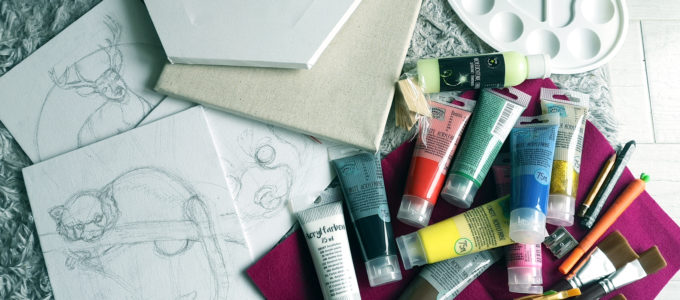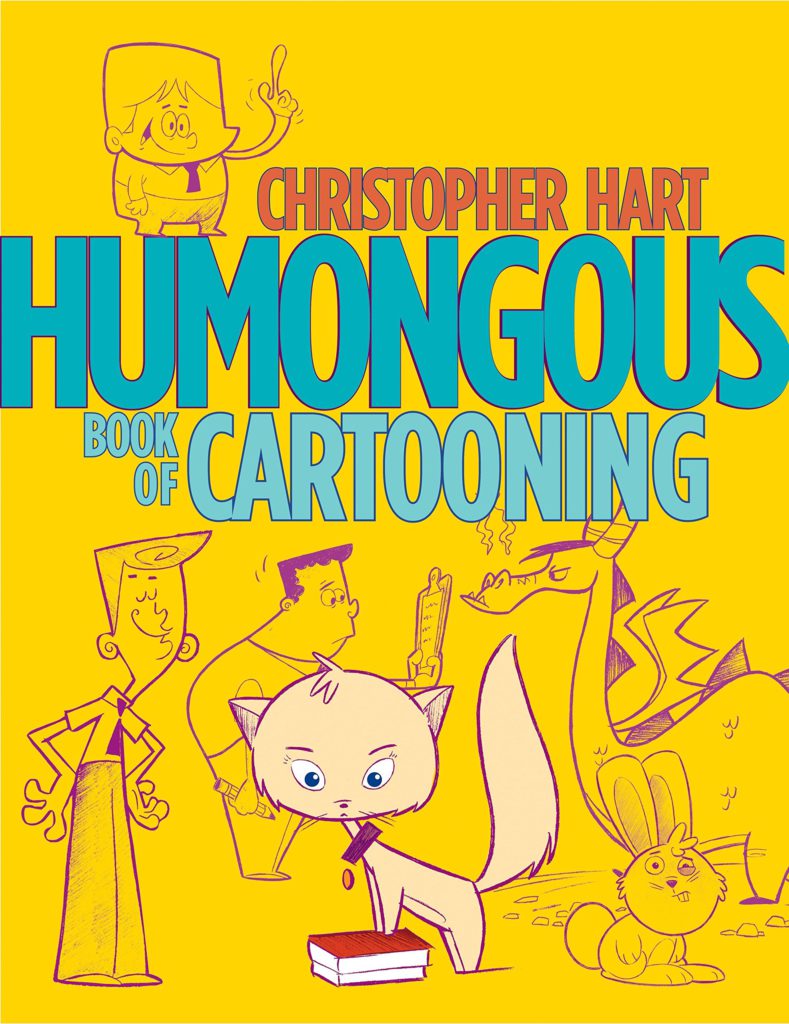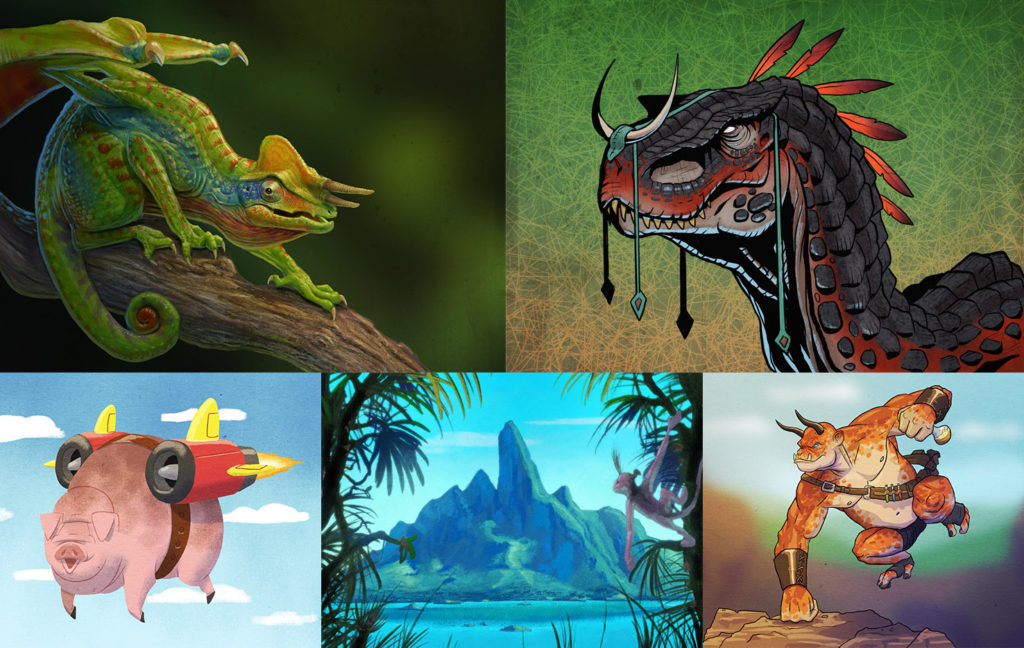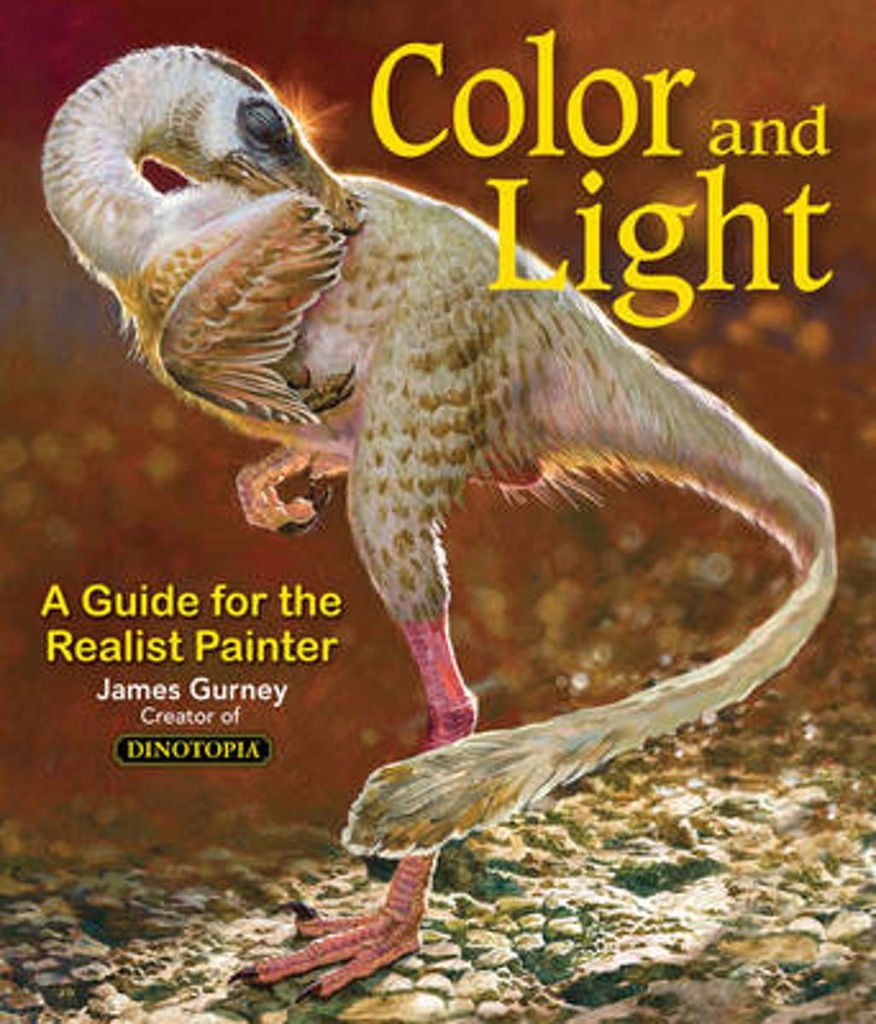Learning resources for a beginner artist

This post covers some learning resources that helped me start the journey with art creation and prepared me for my first Inktober in 2019.
Books:
Color and Light by James Gurney is a must-read. I recommend it to anyone who’s looking to understand how physics, visual perception, geometry, and psychology affect the perception of light and color. The book combines knowledge from different fields – painting, photography, or computer science.
The sky was not composed of adjacent flat colors, but rather of an infinite variety of grading hues. Why did dark colors turn blue as they went back toward the horizon – except in a few instances, when a setting sun casts the far vista in orange light? Why did the leaves have a sharp yellow-green color when the light shined through them, but a gray-green color on top?
In school I was learning how to see and mix color, but I had no idea how to apply this experience to real-world painting problems. Color theory seemed more like a branch of chemistry or mathematics, a separate science that had little to do with making a realistic painting. I felt like a piano student who had played a lot of scales, but had never gotten around to the melody.
If there were answers to my questions about how light interacts with color, atmosphere, water, and other materials, I would have to find them in fields like physics, optics, physiology, and materials science.
And you will find the answers to these problems in Gurney’s book. The artist also has a youtube channel, where he paints and gives valuable advice.

Humongous Book of Cartooning by Christopher Hart is devoted to kids. The simple, childlike language should not bother you, because the book serves as a good material for beginner artists. I love his minimalistic approach to lines and shapes, in order to build a very stylized, retro-cartoony world. You will learn how to build comic poses and postures, how to play with proportions and shapes to create memorable and recognizable characters with a soul.
This artist has written a ton of books, and has a youtube channel, where he shows how to draw cartoons.
Udemy Courses:

Character Art School: Complete Character Drawing Course – how to draw characters out of your head for books, games, animation, manga, comics. This course approaches the subject very reasonably – its authors don’t try to sell you any shortcuts to becoming a great character artist, but they make you understand the basics. That way you will learn how to draw dynamic shapes (and how to do that using opposing curves), character forms and proportions (how to construct a character using primitives), gestures, emotions, etc. Then you will be tasked with building your own visual library, and to help you with that you will be given tons of resources on anatomy and gesture – websites, books and apps, along with a well-composed studying plan for your long journey to self-improvement. There is also a great community devoted to this course on Facebook. People post often, receive feedback and support each other.

The Digital Painting MEGA Course: Beginner to Advanced – As much as I hate catchy titles, this course piqued my interest when I found out it introduced to step by step process of digital painting in 5 different styles. The course starts with the basics – brushes, light and color, value and contrast, surfaces and textures. It helps me a lot to better understand digital tools like layer blend modes and adjustment settings. Austin Batchelor provides useful exercises for beginners. After that you can watch him draw in the inking, cutout, cell shading, photorealistic, and painterly styles.
Youtube channels:
There is no way to list all of the videos that I’ve watched to get better at drawing, but I’d like to highlight some channels I’ve stuck to for a long time and learned a lot from.
Robert Marzullo – Comic Book Illustration and Digital Painting Techniques. Impressive inking style.
Jazza – A great channel about drawing in comic/cartoonish style, both digital and traditional. Jazza works wonders with Copic Markers. Unfortunately, nowadays he is focused on challenges, art competitions, community interactions, which – as much as they are entertaining – are not very learning-oriented. He experiments with various styles, tools, and media, so it might be interesting if you are looking for inspiration. His videos about calligraphy, doodle art, and lithography made me give those techniques a shot. Though you still have access to good learning material that he’s recorded in the past.
Proko – tons of knowledge about anatomy, drawing figures, facial features, caricature. Even though Stan is a realistic and traditional painter, his experience still applies to digital art.
Bob Ross – This guy doesn’t need an introduction. Who has never heard about “happy little trees” or how “everybody needs a friend, even a tree”? Bob Ross was a hero of my and previous generations. He made us believe that anyone can be an artist. He encouraged us to have fun and experiment with the tools and colors. He kept telling us not to worry because there are no such things as mistakes, but only “little happy accidents”. You will find all 31 episodes of Bob’s “The Joy of Painting”, and other videos dedicated to painting landscapes on his channel.
BaM Animation – running by Brent Noll (background designer) and Maximus Pauson (character designer). They are artists working in the television animation industry (Nickelodeon, Disney, Cartoon Network, DreamWorks). The channel consists of videos and time-lapses of redraws, and tutorials about 2D art and animation. You will get to know industry standards, workflows, tips and tricks for the cartoonish drawing style.
Brookes Eggleston – Character Design Forge – useful tips for character design. Brookes focuses on the theoretical aspect behind character creation, like storytelling, their uniqueness, psychology, likeability, stylization. He analyzes a lot of other pieces of arts and IPs, as well as his own.
LavenderTowne – some tips & tricks for Kawaii take on Manga digital art. Also the dos and don’ts for composition, coloring, shading cartoon characters in general.
EricAnthonyJ – digital portraits art, but also motivation videos for artists.
Peter McKinnon – photography and cinematography. Composition, coloring, editing photos and videos. Although Peter uses click-bait titles and tricky topics like “How to make your photos LOOK BETTER FAST!” – he is very experienced and I like his expression.
I studied these resources from July to November 2019. Of course, as with every theoretical knowledge, you also need to practice and just draw. You might feel creative after reading this, but you will not become a better artist without hundreds of hours practicing and experimenting.
Do you have any recommendations for beginner artists?

Leave a Reply